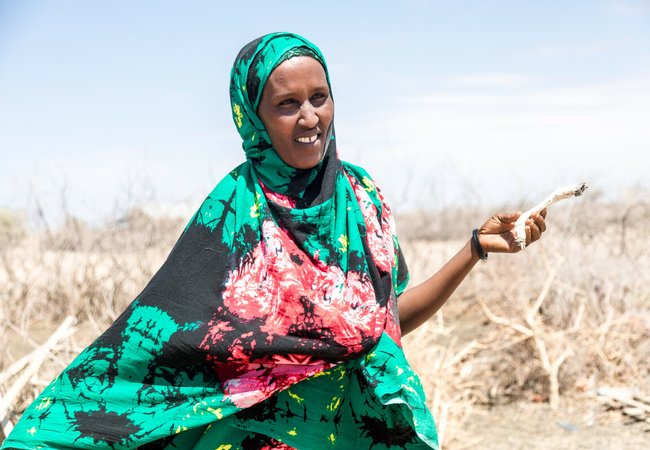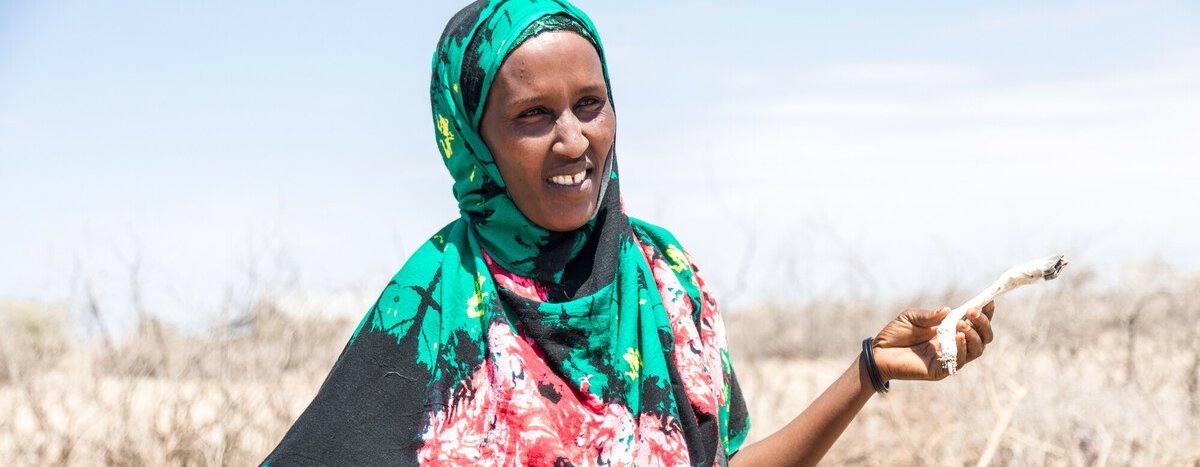Safia is part of a cash transfer programme in Kenya. Photo: Loliwe Phiri/Oxfam



I'm Admin in the United Kingdom
28 Oct, 2022
8 mins read time
A World in Crisis: Event Marks 5 Years of Scotland’s Humanitarian Emergency Fund

I'm Admin in the United Kingdom
28 Oct, 2022
8 mins read time
Safia is part of a cash transfer programme in Kenya. Photo: Loliwe Phiri/Oxfam
Oxfam Scotland participated in a Scottish Parliament event on 27 October to mark five years of the Scottish Government’s Humanitarian Emergency Fund (HEF).
Read a briefing prepared by Oxfam Scotland for MSPs.
Hosted by Sarah Boyack MSP, the event heard about the Fund’s vital support for emergency responses around the world, including: Mercy Corp in Tigray in Ethiopia; SCIAF in South Sudan; Tearfund in Burkina Faso; Islamic Relief and Christian Aid Scotland in Afghanistan; and the British Red Cross in Ukraine. Save the Children Scotland discussed the Disaster Emergency Committee’s response to the Pakistan Floods and Scotland’s International Development described their work to build global solidarity in Scotland.
While welcoming the vital contribution made by the HEF, Jamie Livingstone, Head of Oxfam Scotland, set out the escalating scale of the global humanitarian challenge and reflected on what needs to change.
Today’s session has an alarming title: “A world in crisis”. But even a brief glance at the data tells us that it is sadly accurate. Take just one measure: the number of countries the UN says need humanitarian assistance and protection: it’s 63. That’s 63 different places and peoples facing humanitarian turmoil of one form or another.
When talking about the scale of humanitarian crises, the numbers involved are often astonishingly large. The risk, of course, is that we begin to lose sight of the human impact. Yet humanitarian crises are about lives lost, lives ruined, lives characterised by often unimaginable suffering.
Scotland’s Humanitarian Emergency Fund may be small, with a baseline allocation of £1m per year, but it has undoubtedly helped. The Fund has brought predictability and transparency to the Scottish Government’s funding, which – of course – is intended to be additional to that at UK level. The Scottish Government deserves significant credit for it. So too, amid cross-party support, do the other parties here at the Scottish Parliament. We shouldn’t, and we don’t, take the Fund for granted, nor the wider International Development Fund and Climate Justice Fund.
Not when around 9% of the global population live in extreme poverty – less than $1.90 a day – and when humanitarian need, continues to grow: the UN says 274 million people will need humanitarian help this year – up 39 million on just a year ago.
Now, the reasons for this are complex. But conflict, climate change, and economic turmoil, including that flowing from COVID-19, are all key drivers. And, of course, these drivers often intersect with each other: heaping misery on top of suffering. I want to touch on each of them, and offer some reflections on the global humanitarian system, of which the HEF is a small part.
Ongoing Impact of COVID-19
Of course, we cannot rush beyond the deep and ongoing consequences of COVID-19, a pandemic that’s estimated to have caused more than 21 million “excess deaths” globally, far more than the official death toll of 6.6million.
It continues to severely impact health systems, educational outcomes, and gender inequality – with these made much worse by vaccine inequity: just 4% of the vaccines administered globally have reached the most vulnerable countries. Despite huge public investment in vaccine development, big pharma continues to pocket obscene profits.
Yet, in 2020, during Covid-19, the value of UN-led appeals reached a record high, but only half the money was contributed – a record low. But the reality is that the pandemic hit an already volatile world, with many people lacking the resilience needed to cope. And, in all too many communities, COVID-19 was a simply ‘yet-another’ crisis – and it was not always the biggest.
The Impact of Conflict
Take conflict: a quarter of the world’s entire population, some 2 billion people, now live in conflict-affected areas. And, as of June 2022, there were more than 59 million people internally displaced by conflict and violence, the highest ever recorded, with significant forced displacements stretching from West Africa, Ethiopia, Mozambique and Myanmar to Ukraine.
Sadly, we’re now seeing more drawn-out conflicts. Yemen is perhaps one of the sharpest examples – a conflict that the UN estimates has claimed 377,000 lives. Of course, it’s a conflict fuelled by billions of pounds worth of UK arms sales to Saudi Arabia and other Gulf countries.
Globally, it’s predicted that as many as two thirds of the world’s extreme poor could be living in fragile or conflict-affected settings by 2030. In fact, the World Bank says that conflicts are driving 80% of humanitarian needs. We will fail reduce global humanitarian suffering without investing in conflict sensitivity, conflict prevention and peacebuilding at national and community levels.
The Climate Crisis
But violence takes many forms – and the climate crisis is one of them. It’s also a multiplier: of poverty, of hunger, of gender inequality, of suffering. And, at its core, it is also a multiplier of injustice.
In just the last six years, severe hunger has more than doubled in 10 of the world’s worst “climate hotspots” – these are the countries that have the highest UN appeals related to major weather extremes this century: Afghanistan, Burkina Faso, Djibouti, Guatemala, Haiti, Kenya, Madagascar, Niger, Somalia and Zimbabwe. And yet, collectively, these countries were responsible for just 0.13% of global carbon emissions in 2020.
The climate crisis is increasingly inseparable from humanitarian crises. Indeed, according to the World Meteorological Organization, extreme weather events have increased five-fold over the past 50 years. These are destroying homes, decimating livelihoods, fuelling conflict and displacement, and deepening inequality. The floods in Pakistan, impacting 33 million people – including 7 million children in need of nutrition support, is just the latest example.
Not only have rich, high-carbon emitting nations failed to reduce their emissions fast enough, they’ve abjectly failed to meet their decade-old promise to mobilise $100 billion per year in climate finance to support lower income countries to adapt. While high-income countries report having mobilised $83.3 billion in 2020, Oxfam estimates the real value was only around a third of that and, according to the latest assessment by the OECD, loans made up 71% of public climate finance provided. Yet the World Bank and IMF debt sustainability analysis indicates that over half of the countries in its low-income group are either in, or at high risk of, debt distress. And, alongside this failure, for more than three decades rich nations have also blocked new financial support to help communities address irreversible losses and damages from the climate crisis – a key issue for COP27 in Egypt in just over a week’s time.
Together, these failures are leaving the already over-stretched humanitarian aid system to pick up the pieces. Yet this system was never designed to respond to cyclical shocks of such scale and frequency. Funding requirements for the UN humanitarian appeals linked to extreme weather are eight times higher than they were 20 years ago. Yet nearly half of its appeal targets have gone unmet in the past five years. Little wonder then, that the humanitarian system is failing to cope.
East Africa Hunger Crisis
East Africa is a prime, though not the only, example. As we know, Somalia, Kenya and Ethiopia face the worst drought in 40 years. Earlier this year, we estimated that one person is likely dying of hunger every 48 seconds. We’ve now had to upgrade that analysis: we fear one person will die of hunger every 36 seconds by the end of the year. And this doesn’t event take account of the hunger crisis caused by flooding and conflict in South Sudan.
This regional crisis is driven by climate, COVID-19, and conflict, made worse by rising food prices and a broken food system. But the scale of it is a direct consequence of the international community’s failure to learn the lessons of the past. In 2017, when famine again threatened East Africa, it was averted by ambitious early action. This time, since the alarm was first raised in late 2020, the world has fiddled in the face of famine. Funding has increased in recent months but in Somalia the UN’s top humanitarian chief says famine is now “at the door”.
Shamefully, it seems the international community is waiting for famine to be declared to act – and if they do, it’s likely to be both too little and too late. Take the UK. The Government’s recent announcement of £22.8m of aid to Somalia is of course positive, but the UK’s confirmed allocation this financial year of £156m for East Africa, is less than a fifth of the level committed, some £861m, in 2017-18.
At a press conference in Nairobi earlier this year, my colleague Gabriela Bucher, Oxfam International’s Executive Director, put it simply: “The brutal truth is that at the moment East Africa is not on the global agenda”. She lamented the shameful inequality at the heart of the humanitarian system. While all UN appeals are under-funded, indeed overall they’re today just 38% funded, some are better supported than others. The Ukraine appeal is 68% funded. Still too low, but sharply higher than, for example, Ethiopia at 39%. Or, even more starkly, the Pakistan floods response at just 27% funded. Yet, as Gabriela told that press conference in East Africa: “The cries of children in all crises sound the same”.
Gender Impacts
And, of course, when humanitarian need surges, as it did during COVID-19, women and girls often suffer most due to deeply rooted gender inequality. For example, during food shortages, women eat least and last. Their assets are usually sold first. During water shortages women and girls are often forced to travel increasingly long distances to fetch water. Many girls are forced to drop out from school and their parents see their forced marriage as a survival strategy. The need to invest in women’s rights organisations is critical, so the Scottish Government’s planned Equalities Programme, focused on women and girls, is a positive trajectory.
The Future of Humanitarian Response
Yet, just like tackling poverty, humanitarian suffering, isn’t inevitable – it’s the result of political choices. So, I want to offer some reflections on the change we need.
Firstly, something Oxfam’s talked about for years: extreme economic inequality. When it comes to the severity of unmet humanitarian need, the scale of inequality is morally indefensible. Just one example: in July, we released data showing the collective wealth of food billionaires – those who own major food corporations – has increased by £321bn since 2020. That can’t be right when people across East Africa face famine, or while so many people here in Scotland rely on foodbanks due to a lack of access to an adequate income.
During the first two years of the pandemic, the world’s ten richest men more than doubled their fortunes. But more broadly, we cannot continue to let the likes of big pharma, food giants, and tech companies – and the world’s super-rich who own them – profit from pain as we watch poverty rise, and humanitarian appeals go unfunded.
But while equitably sourcing new financial resources is essential, if East Africa reinforces anything, it’s that a humanitarian system forged in a world before the climate crisis gathered pace needs radical overhaul. As explored by my colleagues, while the humanitarian system has saved countless lives, the turbo-charged complexity of today’s challenges has exposed its weaknesses. And we cannot continue to pin our hopes on a broken, piecemeal humanitarian system and dysfunctional climate finance.
It’s therefore positive to see the likes of Mia Mottley, the Prime Minister of Barbados, and others, urging major changes to the post-war global financial architecture, including the IMF and the World Bank, as part of what she calls a “new internationalism”. The ideas she posits, including the redistribution of the IMF’s $100bn in special drawing rights, and the inclusion of natural disaster and pandemic clauses in debt instruments, deserve meaningful consideration.
We need a system that pre-positions resources to help finance global public goods, from climate adaptation to social protection. After all, preventing disasters saves lives, but also costs less than responding when a crisis unfolds and then deepens. We need a system that’s nips crises in the bud, not one that passes round a ‘disaster begging bowl’ nearly always after the fact, if at all.
And, in our view, we need a system that also reflects that humanitarian relief, development and peacebuilding are not serial processes. To address people’s vulnerability before, during and after crises, they are often all needed at the same time. This isn’t a new concept – take, for example, long-standing work on ‘disaster risk reduction’ (DRR). But in the last few years it is has gained increasing traction, with shifts by institutions like the UN, the World Bank, and others.
This remains a work in progress, but – if realised – it should mean that alongside meeting immediate needs, we collectively do more to challenge the systemic causes of conflict and vulnerability – poverty, inequality and, amid a squeeze on civil society space, the lack of functioning democratic systems. By doing so, we have a better chance of reducing the impact of cyclical or recurrent humanitarian shocks, while building sustainable peace. And at the core must be a greater emphasis on early warning, early action and prevention.
But achieving the right mix should never be an excuse to delay, or not deliver, humanitarian assistance when it is needed. Nor can it undermine the impartiality that’s so critical for agencies responding in many humanitarian contexts. And, of course, we must achieve this shift while, as a sector – including Oxfam – continuing to dismantle and disrupt our own colonial power as it shows up in the way we work, including by meaningfully shifting power to those we seek to support – and, critically, by doing all we can to keep people safe.
But without this more integrated feminist approach – saving lives, building resilience, securing inclusive peace, tackling the climate crisis, delivering gender and racial justice, and investing in the future – many of our humanitarian interventions are inevitably destined to be short-term fixes within a world of escalating crises.
Note: actual delivery may have differed to the text above.